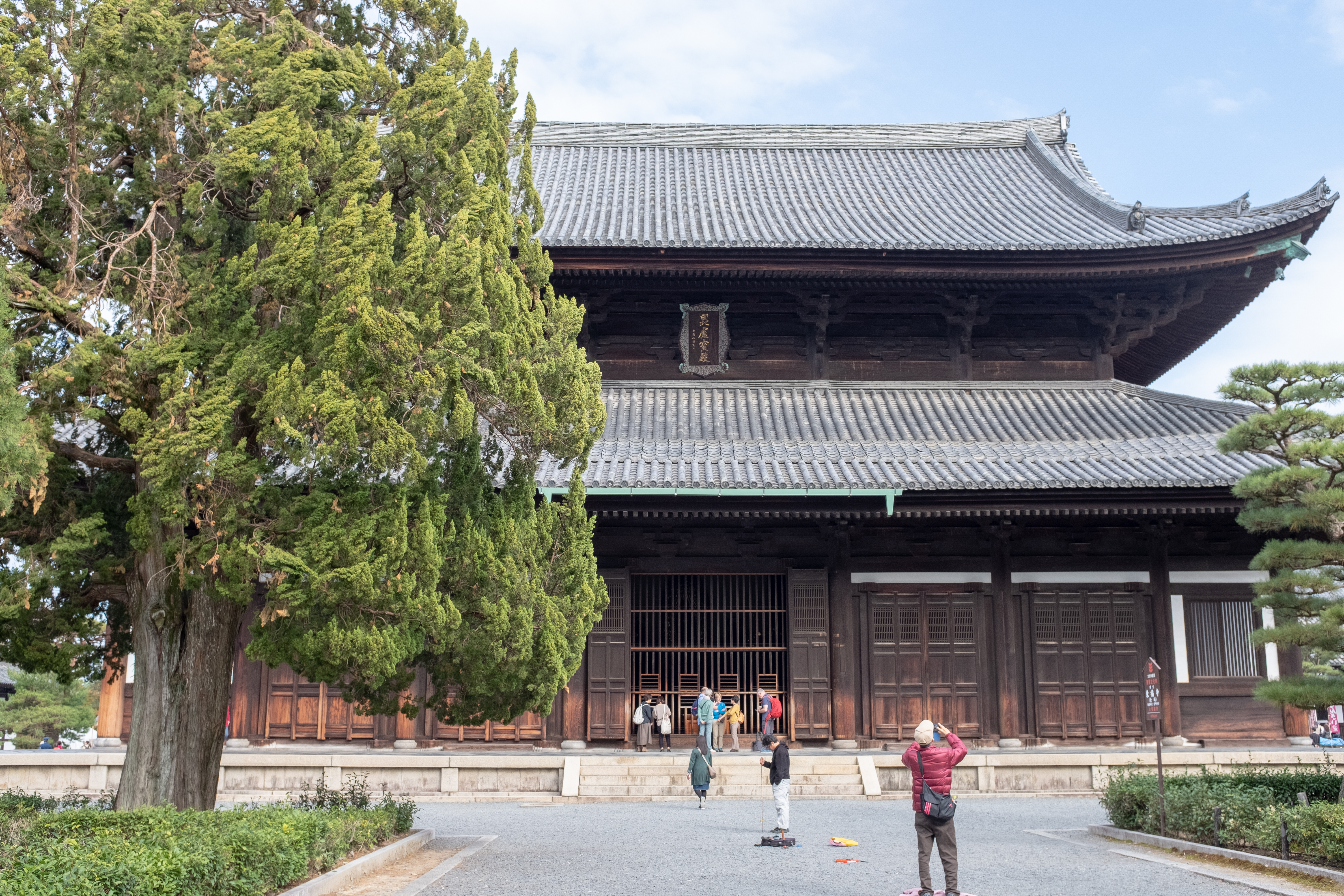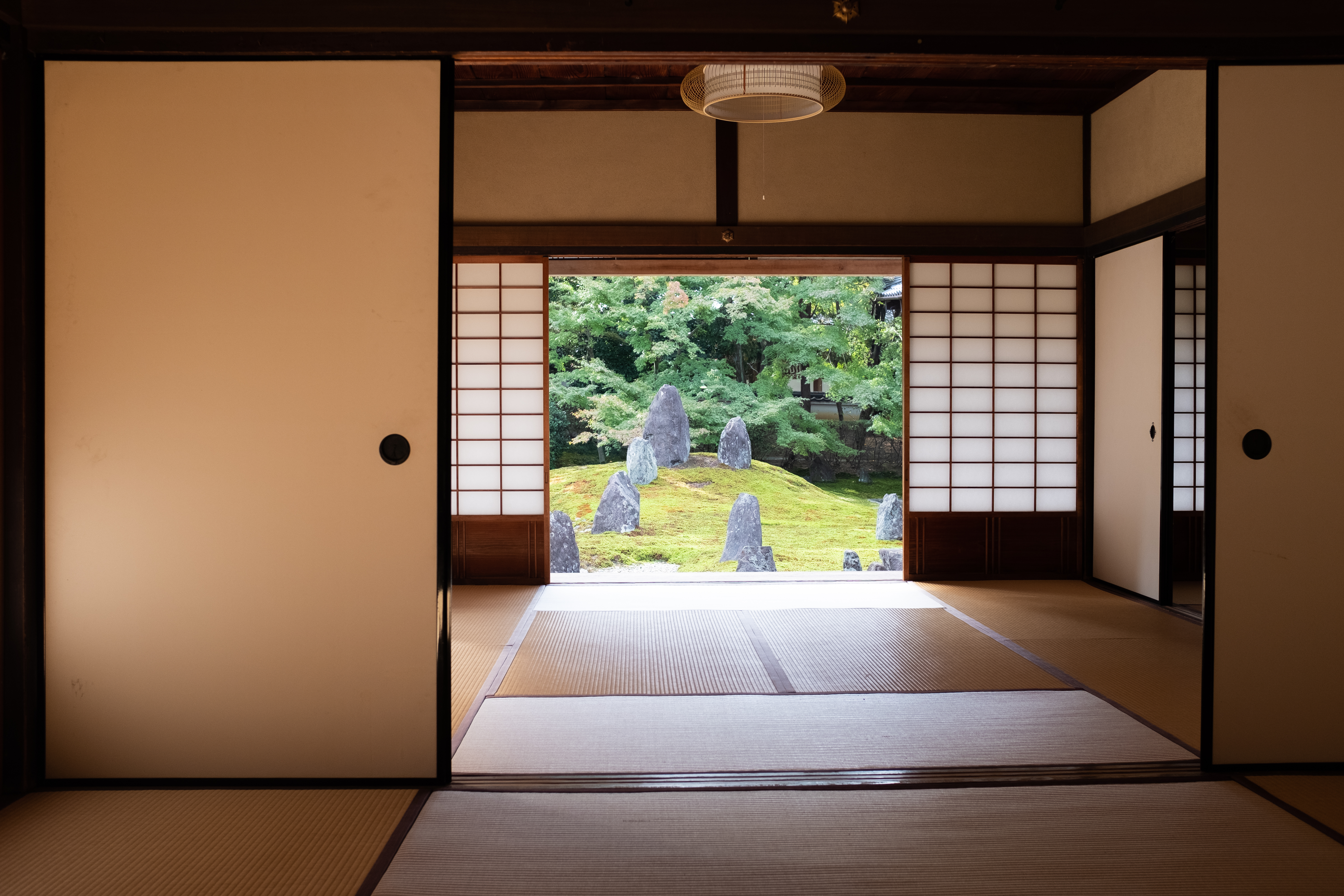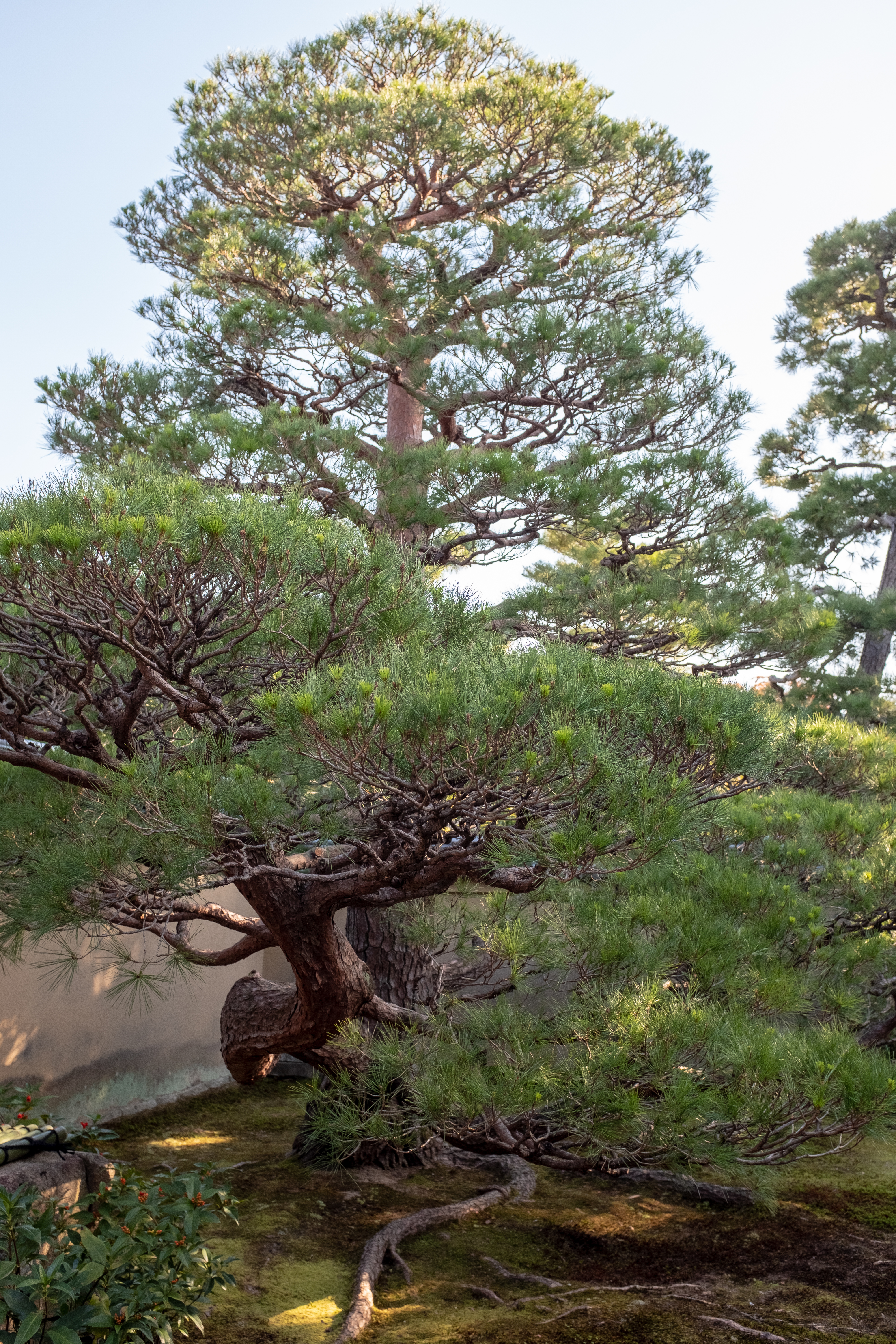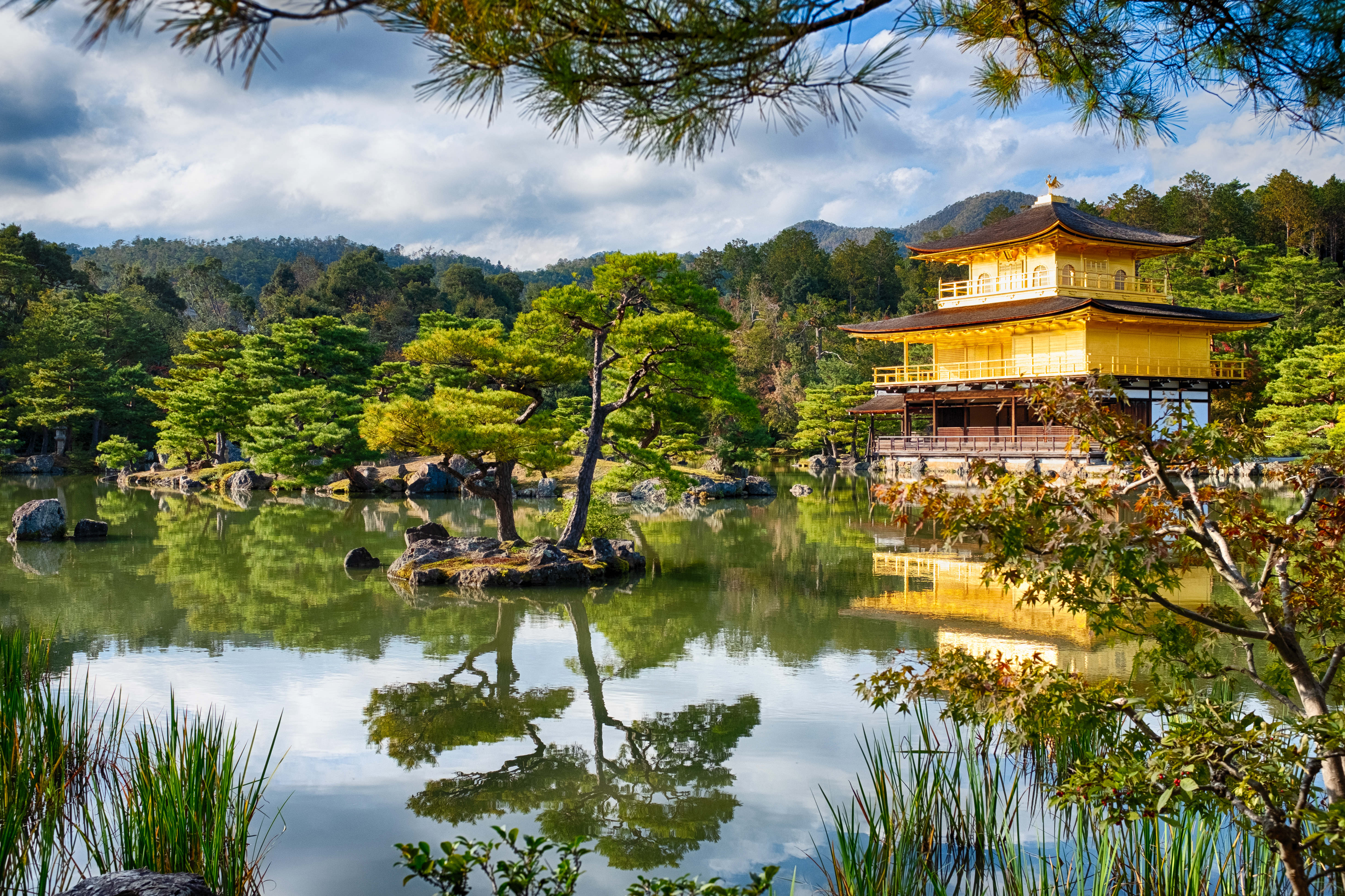There are about 2,000 Kyoto shrines and temples. We didn’t visit nearly that many, but here are a number that we did have time to visit.
Kinkaku-ji
Kinkaku, or Golden Pavilion, is a Buddhist hall that contains relics of Buddha. The surrounding garden and pavilion represent the Pure Land of Buddha. The top two levels of Kinkaku are covered by gold foil. The entire scene, with the reflective pond, curated trees, and shining Kinkaku is truly remarkable. It felt like you were looking at a painting.
Tofuku-ji

Tofuku-ji is a very large Buddhist temple. It is one of the Kyoto Gozen, or one of the five most important Zen temples of Kyoto along with Tenryu-ji, Shokoku-ji, Kennin-ji, and Manju-ji. The temple has many gardens and maple trees, making it quite popular during fall. Unfortunately for us, we arrived a bit too early for peak fall foliage. It was still very beautiful.
Komyou-in

Komyou-in is a sub-temple of Tofuku-ji. Komyou-in is renowned for its serene rock garden and tranquil atmosphere. It was remarkably quiet during our visit.
Fushimi Inari-Taisha

The hike up the mountain and through the torii gates at Fushimi Inari-Taisha was magical. The highlight, and most famous aspect of the temple are the thousands of orange gates, or torii. The torii are donations to the temple for wishes that have come true. Also, throughout the hike around the mountain are countless smaller shrines.
Ryoan-ji
Ryoan-ji is a sprawling compound containing a temple and surrounding landscape garden. The Zen temple has a simple, yet famous rock garden. The surrounding landscape garden is quite beautiful and dominated by the large Kyoyochi Pond.
Kennin-ji
Kennin-ji is the oldest Zen temple in Kyoto. The founder of Kennin-ji, Yousai, is recognized as the founder of the tea ceremony and introduced Zen to Japan, making Kennin-ji a very important Zen temple.
On the ceiling of the main hall, or Hatto, is painted a the Twin Dragons. The paining commemorates the 800-year anniversary of Kennin-ji.
Zuihou-in

Zuihou-in is a sub-temple within Daitoku-ji. This temple was remarkable as the patron lord, Otomo, had converted to Christianity while it was outlawed in Japan. Although Zuihou-in is a Buddhist temple, and never taught Christianity, there is a hidden homage to Christianity with the Garden of the Cross – a stone garden where, when looked at from the correct angle, the stones are aligned in a cross shape. Also, hidden under one of the stone lanterns is a statue of the Virgin Mary.

